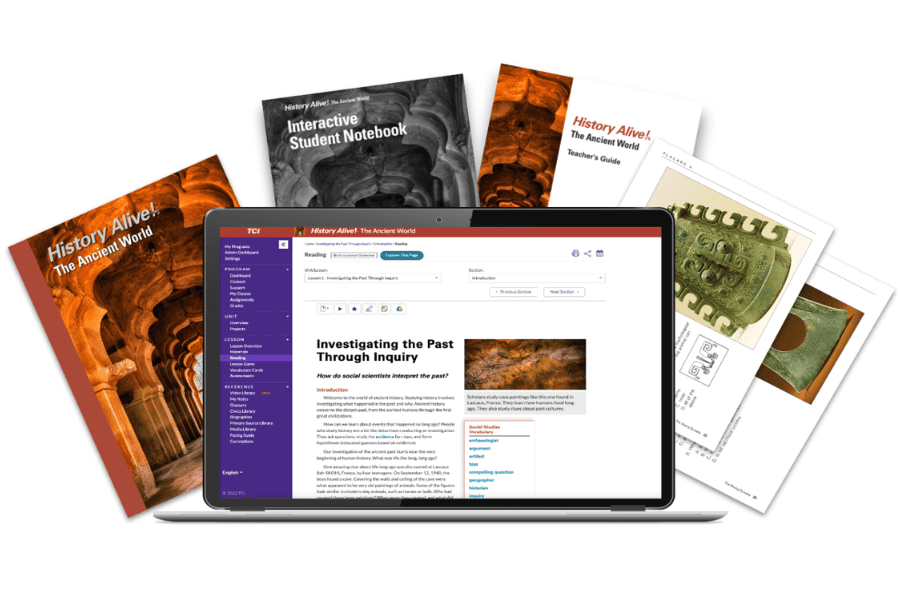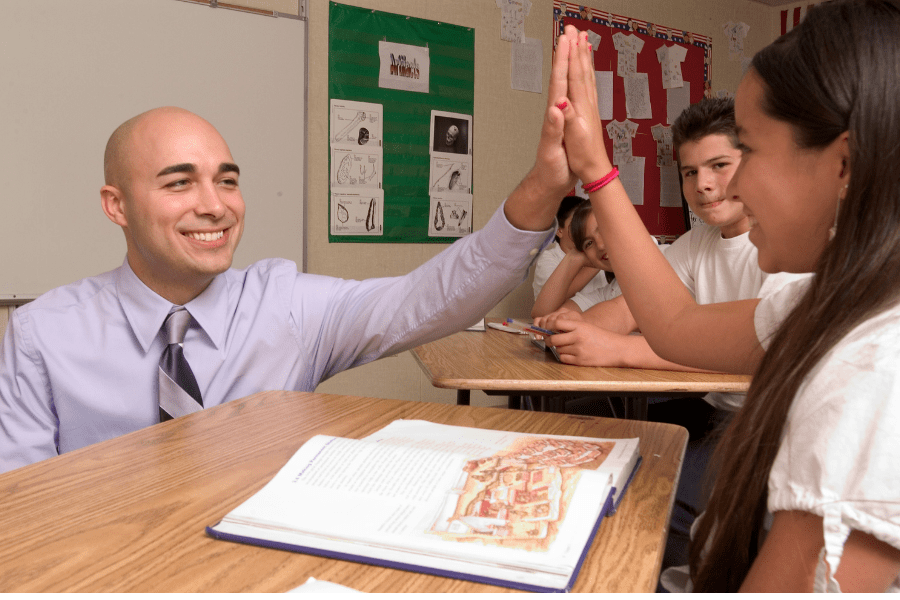
Teacher professional development options seem endless—a quick online search brings up more choices than anyone could possibly sort through. But not all PD is created equal. Far too often, teachers find themselves in passive, “sit-and-get” sessions that check a box but offer little real value. Additionally, many sessions focus on in-service or basic implementation training, which often cover program logistics but offer little to support real growth.
So how do you find professional development that goes beyond the basics and actually supports your growth as a teacher? What separates meaningful PD from the rest? Let’s explore how active learning makes professional learning more effective—and why it matters for you and your students.
Common Challenges with Traditional PD
Teacher professional development comes in many forms, from in-person workshops to virtual webinars. But it’s not the format that determines whether PD is effective—it’s the experience itself. Great professional learning can happen in any setting, just as lackluster sessions can pop up anywhere.
The real problem arises when PD feels cookie-cutter. You can usually spot this type of development by a few telltale signs:
- It feels generic and passive
- It lacks teacher participation
- It doesn’t connect to real classroom challenges
- It offers little flexibility for teachers’ busy schedules
The result of this is that teachers leave uninspired, without practical ideas or strategies they can apply to their classrooms.
Moving Beyond the Checklist: Active Learning in PD
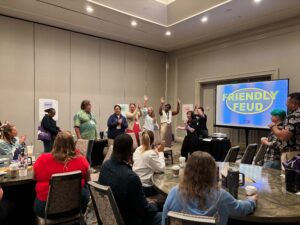
Teachers gather at an in person PD event to build skills through games and insightful sessions.
While traditional PD can fall short of expectations, there are learning opportunities for teachers that go beyond the basics. Research points to active learning as key to effective PD, including elements like collaboration, modeling lessons, and reflection.
Active learning is not just for K-12 students—it’s just as powerful for teachers. When professional development is hands-on and built for adult learners, teachers are more engaged and walk away with practical skills they can use right away. PD that models effective instruction and provides ready-to-use resources not only boosts confidence, but also makes it easy to bring new strategies to life.
But active learning doesn’t stop at individual growth. It’s also about building a strong community. Real growth happens when teachers have the chance to learn together, share struggles, celebrate successes, and support each other along the way. This empowers and connects teachers, giving them the tools and support they need to make lasting change in their classrooms.
Characteristics of Active Learning
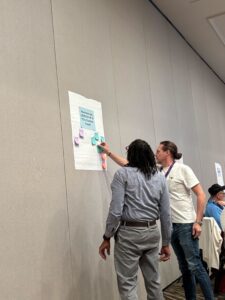
Active learning includes opportunities for collaboration and teacher participation.
The most effective professional development gives teachers a chance to actively learn, learn from peers, and find practical strategies that fit their lives. Hands-on, practical experiences make new skills stick, while learning with and from fellow teachers leads to lasting growth.
Here are different ways to incorporate active learning in teacher PD:
- Encourage teacher participation. Build in opportunities for teachers to share their experiences in the classroom, ask questions, and try strategies. For virtual PD, plan out when to include interactive sections, including polls, Q&A, and opportunities for teachers to share their classroom experiences.
- Lean into collaboration. Learning together leads to more powerful professional growth. Studies show that group work, discussion, and peer-led sessions lead to deeper reflection and a strong sense of community. When teachers learn together, they can share real insights, ask questions, and try out new strategies with confidence.
- Make it relevant to the classroom. “Job-embedded” professional development means it is directly connected to the classroom. The most effective PD offers practical strategies, ready-to-use resources, and real examples you can immediately try with students. PD should include resources teachers can take away with them and provide right away, such as checklists, toolkits, teaching strategies, or sample lessons.
- Model instructional practices. When possible, PD should provide concrete examples of learning strategies. One way to do this is through modeling, which shows how to incorporate practices into instruction. You can also provide templates and resources for further guidance. This gives teachers a clear starting point and practical guidance they can use right away.
- Provide opportunities for reflection. Active learning isn’t just about participating and trying new strategies—it’s also about taking a moment to pause and process. When PD includes opportunities for reflection, teachers can think about what they’ve learned, connect new ideas to their own classrooms, and plan how they’ll put those strategies into practice. Reflection turns experiences into meaningful growth and helps teachers build confidence in using new approaches.
Examples of Active Learning in Teacher PD
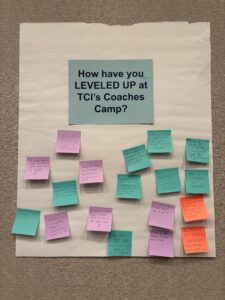
Teachers share how TCI’s Coaches Camp helped them level up.
Teachers’ Curriculum Institute (TCI) provides teachers with opportunities for active learning in professional development. From interactive webinars to larger in-person events and virtual summits, every session is designed with active learning in mind so social studies and science teachers get the most out of their time.
- Collaborative In Person Workshops: The summer is a great opportunity for teachers to reflect on their teaching practices and gather to share their experiences. Over the summer, TCI hosts Coaches Camps, a two-day learning event where teachers participate in a series of interactive workshops. Educators at any stage, from new teachers to seasoned leaders, can explore and model engagement strategies, connect with peers, and create actionable plans they can take back to their classrooms in the fall. Everyone leaves with fresh ideas, renewed energy, and real resources.
- Interactive Virtual Events: Virtual events can be just as engaging and impactful. Whether you’re joining TCI’s Back to School Summit or a webinar, our sessions use active learning best practices. We model strategies, encourage participation, and provide resources you can use right away. These experiences support teachers at every level: those newer to the classroom get helpful guidance, while experienced teachers find new inspiration and tools to refine their craft.
- Year-Round Teacher Communities: Learning is at its best when teachers learn together. That’s why we offer opportunities to connect all year long, through the TCI Coach program and ongoing webinars. Plus, our Teach with TCI Facebook group is a space where teachers can share ideas, ask questions, and celebrate wins together.
- Flexible, Self-Paced Learning: We know teachers lead busy lives. TCI’s in-app PD courses are self-paced and available year-round, making it easy to access professional learning whenever and wherever it fits your schedule. These courses are filled with practical teaching strategies and can be revisited anytime you need a refresher or new ideas throughout the year.
When professional development is active, collaborative, and flexible, teachers walk away energized and confident. TCI’s approach is just one example of how PD can truly support and empower teachers.
Building Lasting Success for Teachers and Students
Active learning isn’t just a trend. It’s the heartbeat of effective professional development. When teachers are engaged, have opportunities to collaborate, and access learning that fits their lives, professional development becomes effective. Whether it’s through workshops, flexible self-paced courses, or supportive teacher communities, PD should leave you feeling confident and ready to try something new.
Explore TCI’s high-quality, standards-aligned programs: K-12 Social Studies | K-8 Science

